As India’s ‘Capital City’, New Delhi serves as a global tourism hotspot of India, attracting tourists from all over the world. What makes the famous tourist places in Delhi sacred heritage affairs is their century-old legacies. While touring Delhi, you automatically transfer back in time and explore the mysteries behind the city’s rich cultural history inherited over time. Delhi tourism collectively reflects the vibrancy of our ‘Indian Culture’.
For a quick fact check, Delhi has been a powerful center exercising geopolitically strategic administration over the entire nation for quite a long while. Its suitable landlocked geographic location has helped the focal center garner massive power dynamics from across the world. Some regional rulers also tried to evade and seize Delhi while executing their kingdom’s Northward expansion, which never really materialized in the practical world.
Since the Delhi Sultanate era to date, Delhi consistently maintained a strong reputation as a strategic center of administrative power. This virtue constantly influences its cultural enrichment, which further gifts the city a host of interesting tourist places one can choose to explore.
Top 15 Tourist Places to Visit in Delhi
Out of the innumerable options, the top tourist places in Delhi mostly reflect Mughal architecture; and shortlisting them from the trending lot is a pretty challenging task. Nevertheless, it’s on us to prepare your Delhi itinerary by enlisting the top 15 places to visit herein as tourists. Let’s embark on this read…
1. India Gate
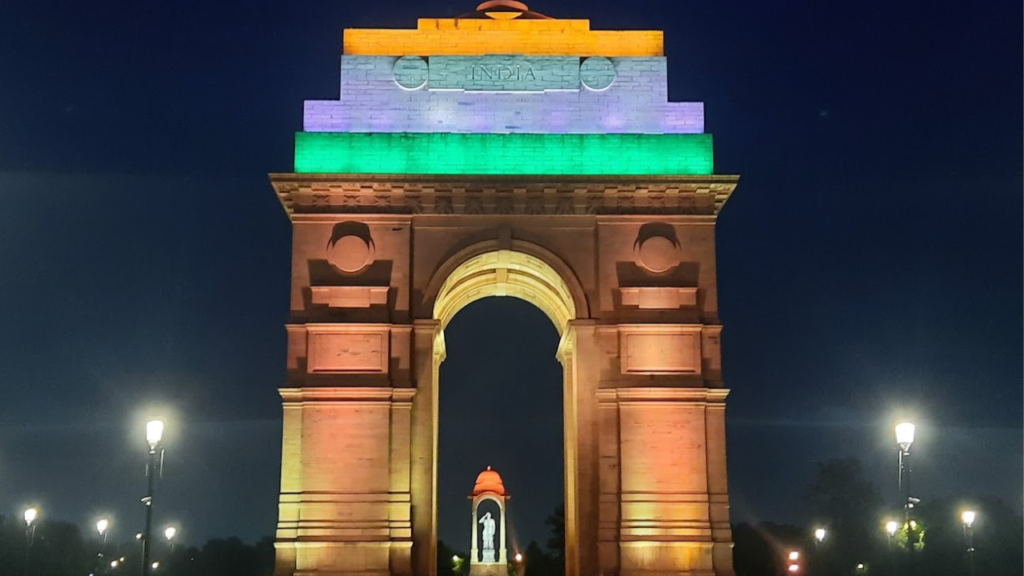
Formerly called the ‘All India War Memorial’, India Gate stands tall at the Eastern corner of New Delhi’s ‘Kartavya Path’. This monument is one of the largest Indian war memorials.
The India gate was constructed to pay patriotic homage to our Indian Army bravehearts, who were martyred during the ‘World War I’, the ‘Anglo-Afghan War III’, along with in other prominent global warfare. On every 26th of January, it’s only after our PMO’s religious visit to this monument to pay homage to these martyred soldiers before the ‘Amar Jawan Jyoti’, that our Republic Day parade commences.
The ‘Amar Jawan Jyoti’ (Flame of the Immortal Soldier) was installed right beneath its main archway in 1972 (after the Bangladesh Liberation War). It looks like a black marble plinth supporting the reversed rifle. Four eternal flames bound this structure while a war helmet caps it from the top. This structure was installed as ‘India’s tomb of the unknown soldier’ to honor the nation’s unsung heroes.
This architectural marvel with intricate carvings reflects Roman influences (especially its memorial and main arches).
Other than serving as one of the most popular places to visit in Delhi, most of the crucial Delhi civil protests commence from this junction, asserting the statue’s firm fundamental status.
Venue Details
Address: Kartavya Path, India Gate, Near National War Memorial , New Delhi – 110001, Delhi
- Entry timings: Open 24 hours throughout the year.
- Website: https://www.delhitourism.gov.in/delhitourism/tourist_place/india_gate.jsp
A simple but charming monument which evokes a patriotic feeling amongst the visitors. It is surrounded by lush green gardens and……
4.6⭐⭐⭐⭐
Vikram Banta
2. Rashtrapati Bhawan
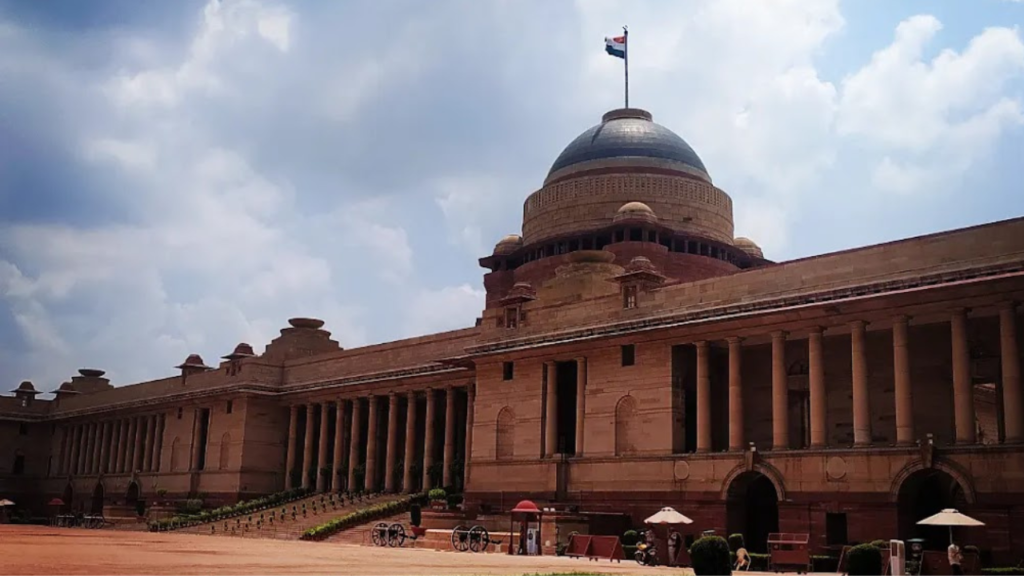
Formerly called the ‘Viceroy’s House’, this royal palace-like establishment serves as the Indian President’s ‘official residence’ throughout their entire administration tenure in office. It’s located along the western edge of Kartavya Path (at Raisina Hill, New Delhi, India), serving as one of the quite popular tourist places in Delhi.
Built during the British Raj by the elite architects Sir Edwin Lutyens and Sir Herbert Baker, Rashtrapati Bhawan is a 4-storey building with a spatial expanse of 200,000 sq. feet. Housing 340 rooms, the raw materials invested in its construction involve 85,000 m3 of stone with little steel; along with 700 million bricks. One must physically visit this building to witness its timeless grandeur with your own eyes.
Venue Details
Address: Rashtrapati Bhawan, President’s Estate, Near Gurudwara Shri Rakab Ganj Sahib, New Delhi – 110004, Delhi
- Entry timings: 9.30 AM – 5.30 PM (Everyday); remains closed from 3 January to 29 January every year)
- Website: https://rashtrapatibhavan.gov.in/
The architecture was very beautiful. The official residence of the President of India. The Mughol gardens are beautiful. Symbol of India’s democracy and heritage. Offices and other utilities are within…..
4.7⭐⭐⭐⭐⭐
Karthik
3. Jantar Mantar
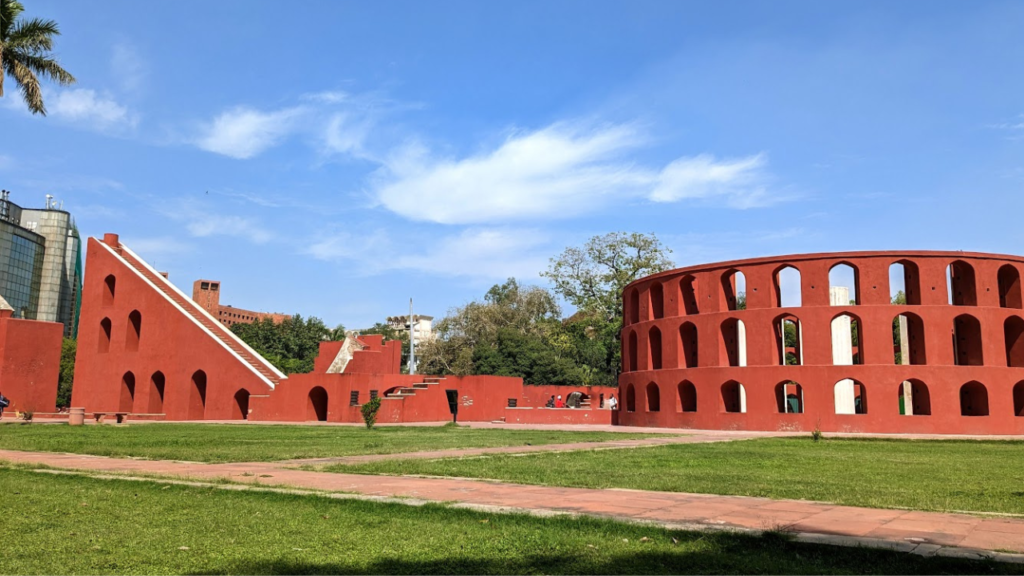
Jantar Mantar was founded by Maharaja Jai Singh II. The term ‘Jantar Mantar’ signifies “instruments for measuring the harmony of the heavens’. This monument has a unique structure and is basically an astronomical observation site. It was the first of it’s kind in the Indian subcontinent.
This 723 ft. high architecture comprises 13 astronomical instruments for studying and tracking both astronomical calendars and tables since 1724. Additionally, they actively track the celestial movement (mainly of the moon, sun, and other planets); thus, catering to detailed astronomical studies.
This unique astronomical landmark includes around 20 main instruments (fixed); and the crucially distinctive instruments from this lot are ‘Ram Yantra,’ ‘Samrat Yantra’, ‘Jaya Prakash Yantra’, and the ‘Misra Yantra’.
Every Astro-enthusiast must visit this awe-inspiringly unique tourist observatory. Tourists exploring the Connaught Place area can easily navigate towards Jantar Mantar.
Venue Details
Address: J6G8+RMC, Connaught Place, Sansad Marg, Near Patel Chowk metro station, New Delhi – 110001, Delhi
- Entry timings: 9 AM – 6 AM
It’s a place to have an idea of the astronomic knowledge of Indians 500 years ago(inaccurately). A very small place compared to all the archaeological sites in Delhi but very well maintained…..
4.2⭐⭐⭐⭐
Kollol Biswas
4. Lotus Temple
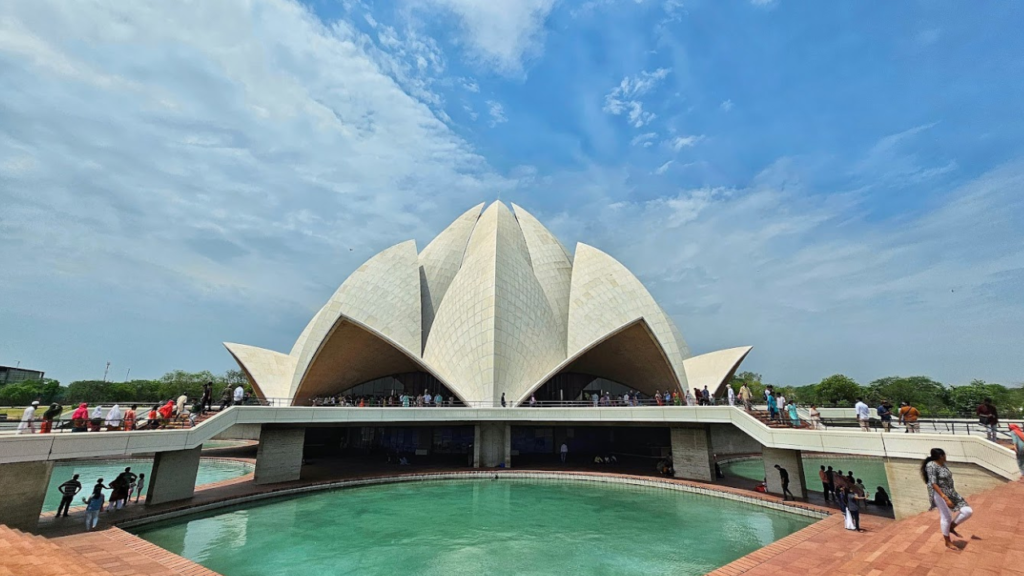
Built in 1986 by the Iranian architect Fariborz Sahba, the Baháʼí House of Worship (Lotus Temple) is situated along the Yamuna River’s western bank.
It helms as a magnificent structure for its lotus-like architecture including 27 free-standing white marble (brought from the Greek mountains of Penteli’) petals that are clustered in three parts forming nine sides. Each side has a door leading the visitors to the temple’s womb (main hall).
With a height of over 34 meters, the Lotus Temple can accommodate around 1,300 people at a time. Surprisingly, the temple has no deity, no pictures, or religious preachy scriptures.
Representing the Baháʼí culture, their faith promotes mass inclusivity and secularism by serving a common worship space for every individual looking for spiritual salvation; regardless of the existing religious, linguistic, ethnic, and cultural dynamics of Indian society.
Interestingly, this faith group doesn’t preach their beliefs either to their members or force them upon the visitors to follow. This temple is ‘open to all’ and the visitors are free to practice their respective faiths and beliefs while sitting in the hall.
This ‘expressionist’ tourism spot is one of the visually enlightening tourist places in Delhi for visitors, who get to experience an immersive peaceful experience away from the capital’s street cacophonies.
The Kalkaji Mandir Metro Station is located around 500 meters away (an interchange is required between the Magenta and Violet Lines respectively).
Venue Details
Address: Lotus Temple Road, Bahapur, Near Shri Kalka Ji Temple, New Delhi – 110019, Delhi
- Entry timings: 8.30 AM – 5 PM (Everyday)
- Website: https://bahaihouseofworship.in/
The Lotus temple is a secular place of worship and contemplation. The entry is free for all which makes this a popular tourist spot. As a result the waiting time can get pretty long so plan accordingly. The grounds are beautiful and immaculately maintained…….
4.5⭐⭐⭐⭐
Prashant Gandhi
5. Jama Masjid
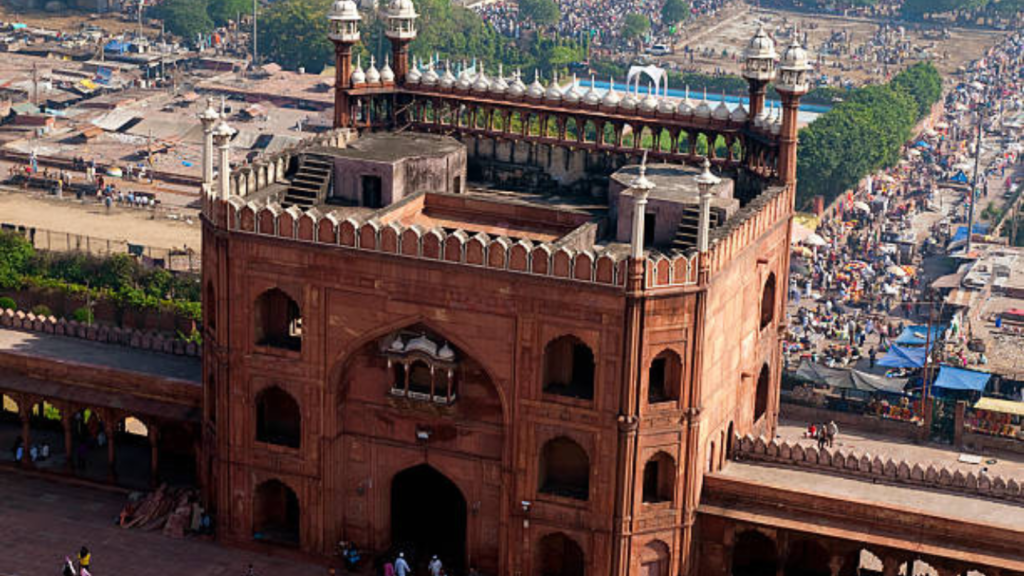
Originally known as ‘Masjid-i-Jehan-Numa’ of Shahjahanabad (presently Old Delhi); Jama Masjid is renowned as one of the largest Indian mosques. As one of the remaining physical testimonies to the relicts of the royal Mughal Empire, the landmark’s visual intricacies effectively help promote Delhi tourism across most sites.
Constructed by Mughal emperor Shah Jahan in the 17th Century, the Mughal architecture was symbolic as the Mughal Empire’s sole imperial mosque till the downfall of their reign in 1857.
This mosque is in the prime locality of Old Delhi. The Sunehri Masjid, Red Fort, and other iconic historic landmarks lie in its vicinity. There is a dedicated metro station for people wanting to get down to Jama Masjid. Hence, taking the subway is one of the best commuting routes.
On Fridays, the Delhi Muslims gather here in masses to offer their regular prayers. This mosque emerges as a prime pilgrim plus tourism center during every Eid celebration.
Beyond its tourism reputation, Jama Masjid’s site has been the focal point of quite some prominent cummuno-political agitations during the British Raj.
Venue Details
Address: Meena Bazaar, Jama Masjid, Near Chandni Chowk, New Delhi – 110006, Delhi
- Entry timings: 7:00 AM – 12:00 PM; 1:30 PM – 6:30 PM (Everyday)
- Website: https://www.delhitourism.gov.in/delhitourism/tourist_place/jama_masjid.jsp
The place is nice, the architecture of the mosque is mesmerizing. The ambience of the surroundings is vibrant. There is a huge market, where one can……
4.5⭐⭐⭐⭐
Steven walter
6. Qutub Minar
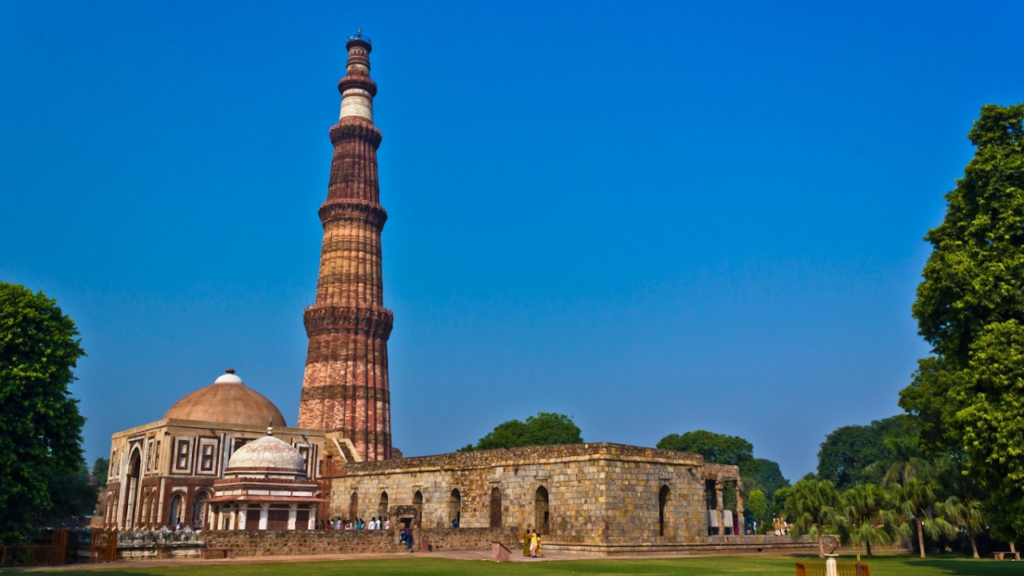
Qutub Minar was the world’s tallest building at the time it was built. It was built as a victory tower to commemorate the victory of Muhamma Ghori over Prithviraj Chauhan.
The Qutub Minar was named after the Sufi saint ‘Qutubudin Baktiyar Kaki’. The construction was initiated by Qutubudin Aibak, but it was completed by his son-in-law, Firoz Shah Tuglaq.
Inspired by Afghanistan’s ‘Minaret of Jam’, Qutub Minar reflects the sheer finesse of ancient Afghani (Indo-Islamic) architecture being made of ‘marble’ and ‘red sandstone’. This 239 ft. high tower comprises 5 storeys with projecting balconies each. This fascinating structure proudly enlists itself on the “UNESCO World Heritage Site” list.
The annually recurring ‘Qutub Festival’ is hosted herein (from November–December). Cultural musicians and dancers grace this venue to perform for three days or more.
Venue Details
Address: Seth Sarai, Mehrauli, Near Lado Sarai Flower Nursery, New Delhi – 110030, Delhi
- Entry timings: 7:00 AM – 8.00 PM (Everyday)
Recently visited Qutub Minar in Delhi, and it was absolutely incredible! The towering structure is a testament to India’s rich…..
4.5⭐⭐⭐⭐
Mehul Shah
7. Red Fort
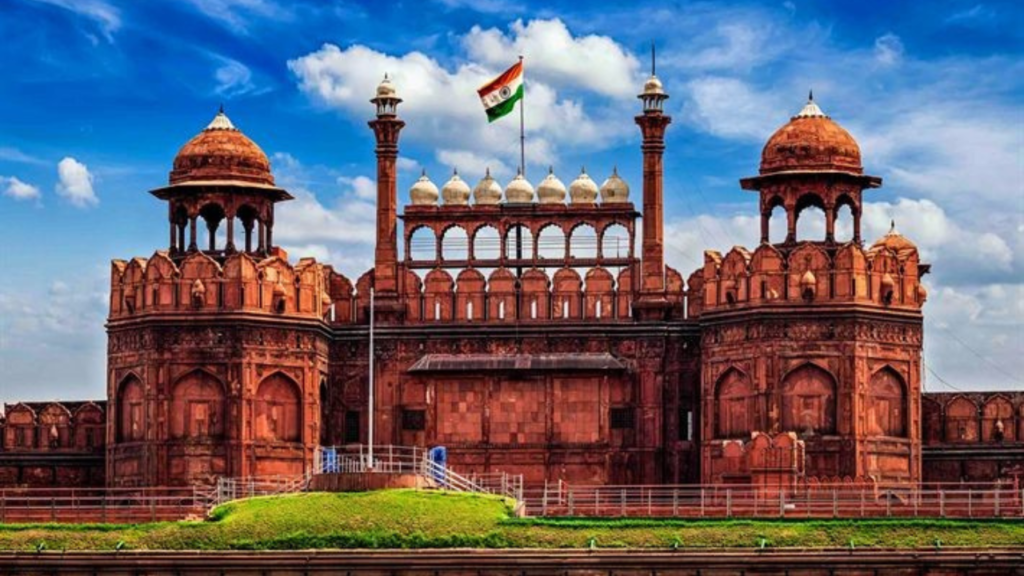
Nationally renowned as the ‘Hindustani Laal Qila.’ This symmetrical fort structure is Old Delhi’s heritage crown. Ustad Ahmad Lahori constructed the Red Fort under the orders of Mughal Emperor Shah Jahan.
Once ready, the Mughal emperors used to primarily reside here. Its construction marked the shifting of the empire’s capital to Delhi from Agra.
The Red Fort has an indo-persian architecture. It is made of beautiful red sandstone, from which it gets its color.
On 15 August 1947, Jawaharlal Nehru hoisted the national flag for the very first time on this fort! Since then, this practice has been religiously followed by every prime minister on 15 August every year.
After hoisting the Indian tricolor flag, the Prime Minister addresses the Indian citizens by delivering his nationally important administrative speech from the landmark itself. This whole event is broadcasted LIVE.
Venue Details
Address: Netaji Subhash Marg, Lal Qila, Near Chandni Chowk, New Delhi – 110006, Delhi
- Entry timings: 9:30 AM – 4:30 PM (Everyday)
- Website: https://www.delhitourism.gov.in/delhitourism/hindi/tourist_place/red_fort.jsp
I absolutely loved the place! Spread over acres, the monument is a must visit. With the beautiful gardens and the grandeur of the halls, the pathways, the market inside…you need a whole day to entirely have a visit around……
4.5⭐⭐⭐⭐
Vanshikha
8. Hauz Khas

The Hauz Khas is an enclosure of an array of structures. It consists of an Islamic seminary, a tomb, a water tank, and an urban village with pavilions. The Hauz Khaz reflects the aesthetics of 13th-century medieval society.
This settlement complex was set up during the reign of Alauddin Khalji. In Persian ‘Hauz Khas’ means ‘the royal tank’. This implies that Hauz Khas was originally a large water reservoir built to supply water to Khilji’s established city called ‘Siri’.
Apart from the royal tank, the Hauz Khas complex also comprises several mosques, madrasas, dome-shaped tombs of the deceased royal Muslims, and the medieval town of Siri.
Years later, this complex now falls under the metropolitan zone of South Delhi and houses upper-class commercial and residential areas. Its soaring commercial value as a tourist destination has also led to the setup of art galleries, restaurants, and high-end boutiques herein to please the tourists.
Venue Details
Address: H53V+667, Hauz Khas Village, Deer Park, Near Hauz Khas Complex, New Delhi – 110016, Delhi
- Entry timings: 5:30 AM – 5:00 PM (Everyday)
Amazing piece of architecture, overlooking the lake and the park. The fort needs ticket entry which can be purchased online/offline both. Perfect escapade from the Delhi hassle in the afternoon…..
4.4⭐⭐⭐⭐
Khobaib Chowdhury
9. Chandni Chowk
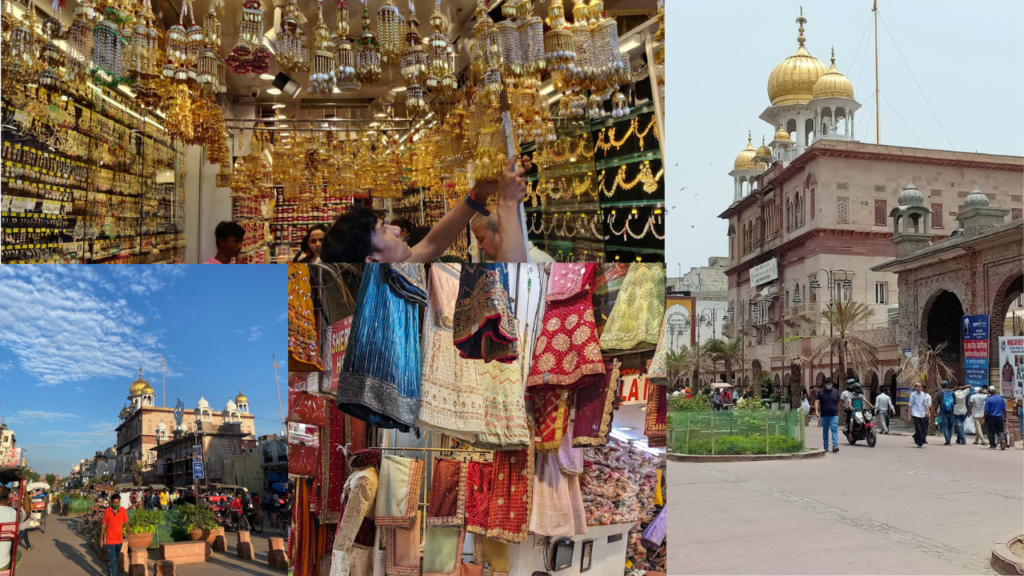
Located right at the heart of Old Delhi, Chandni Chowk is one of the most bustling tourist places in the city. It’s clustered with hawkers selling from everything to everything. Here you can get dried fruits, spices, silver jewellery, and beautiful sarees along its narrow lanes. Meanwhile, small shops retailing essential oils, stationeries, and traditional Indian sweets have flocked the locality’s narrow sideways.
Additionally, this place is a staple abode for serving popularly spicy street food of Northern India to tourists and visitors in Delhi.
Chandni Chowk’s etymology indicates a square plot possessing a reflecting pool. Presently, this zone extends beyond that along the entire route extending from Red Fort’s Lahori Gate to the Fatehpuri Masjid; straight through the walled city.
Historically, this route comprised 3 bazaars; namely ‘Urdu Bazar’ (extended from the Mughal Royal Palace’s Lahori Gate to Chowk Kotwali), ‘Johri Bazar’ (Chowk Kotwali to CC), and ‘Fatehpuri Bazar’ (CC to Fatehpuri Masjid).
This stretch of road comprised of street setups as well as settlement formats known as ‘Kuchas’, ‘Katras’, and ‘Havelis’ (spacious settlements enclosing big rooms surrounding a vast courtyard in its center, collectively enclosed by tall four-sided walls).
Despite its present-day congested cacophony amidst the city’s unbearable heat, citizens and tourists still can’t resist this market zone’s super-affordability and flock here in masses. This virtue gives off tough competition against the Khan market (in terms of mass popularity and daily footfall).
This landmark enjoys a prime location right within the vicinities of the Red Fort and the Jama Masjid.
Venue Details
Address: M64M+FHF, Chandni Chowk Rd., Chhippy Wada, Near Chandni Chowk Metro Station Old Delhi, New Delhi – 110006, Delhi
- Entry timings: Open 24×7 (Everyday)
I have frequented this place on numerous occasions, every time I visit here, I am amazed with the beauty, tranquility this place offers and it always helps me discover a new side of the city. Situated in the heart of Old Delhi, it pulsates with life…….
4.2⭐⭐⭐⭐
Aakash Mittal
10. Connaught Place
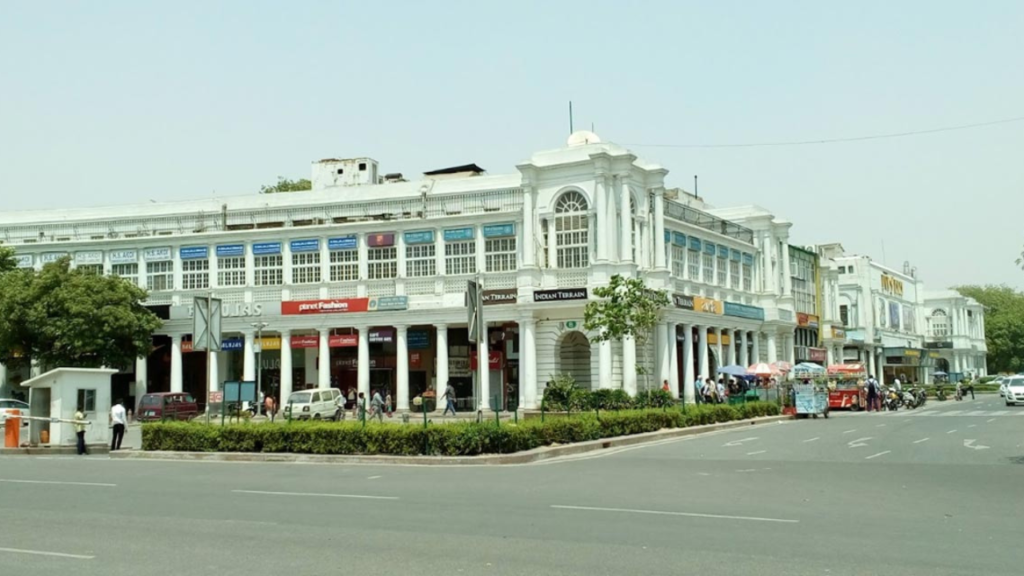
Officially helming as ‘Rajiv Chowk’, Connaught Place is New Delhi’s oldest urban yet bustling Central Business District (CBD). Comprising the majority of this city’s prominent corporate headquarters, this commercial zone supports its bulk business and financial activities.
Its bustling nightlife is aided by supporting premium shopping and dining stops. Its trendy lifestyle actively fosters city tourism. Currently, Connaught Place ranks as one of the most expensive urbanized corporate zones in the entire world.
Formerly named after the ‘First Duke of Connaught and Strathearn’ (Prince Arthur), this zone was officially set up in 1933. Later in 1995, it was renamed as ‘Rajiv Chowk’ after Rajiv Gandhi (former Prime Minister of India).
The setup of various commercial and financial centers herein is supervised by the ‘New Delhi Municipal Council’ (NDMC). This organization merges surveillance activities with the ‘New Delhi Traders Association’ (NDTA) for setting up retail, corporate, dining, shopping, and other pseudo-recreational corners within this zone. This is executed only after tracking these establishments’ trending as well as futuristic commercial and financial values.
This zone enjoys great city connectivity via the ‘Rajiv Chowk Metro Station’.
Venue Details
Address: G- 36, G-Block, Outer Circle, Connaught Place, Near Rajiv Chowk Metro Station New Delhi – 110001, Delhi
- Entry timings: Open 24×7 (Everyday)
11. Lodi Gardens

This community park was established during the 15th-16th Century by the Lodi rulers, whose dynasty extended from Pakistan’s Khyber Pakhtunkhwa province to Punjab.
Despite being one of the most spatial Delhi parks, Lodi Gardens comprises various sacred monuments. These include the tombs of Mohammed Shah and Sikandar Lodi; along with the Shisha and Bara Gumbads as well as the other Lodi architects. The Yamuna River flows by its founder Sikandar Lodi’s tomb.
Despite serving as a regular walk park for most Delhites, one must visit the Lodi Gardens to visit these historic monuments that have effectively trapped time.
Currently, the ‘Archaeological Survey of India’ (ASI) is officially deemed to maintain and preserve the site.
This landmark is located close to both Safdarjung’s Tomb and Khan Market.
Venue Details
Address: Lodhi Rd, Lodhi Gardens, Lodhi Estate, Near India Gate, New Delhi, Delhi – 110003
- Entry timings: 6.00 AM – 8.00 PM (Everyday)
- Website: https://www.ndmc.gov.in/
Wonderful place for photographers to showcase their talent. No entry fees, no boundaries on timings of stay. Entry starts from 6am till 8pm…..
4.5⭐⭐⭐⭐
Saha
12. Akshardham Temple
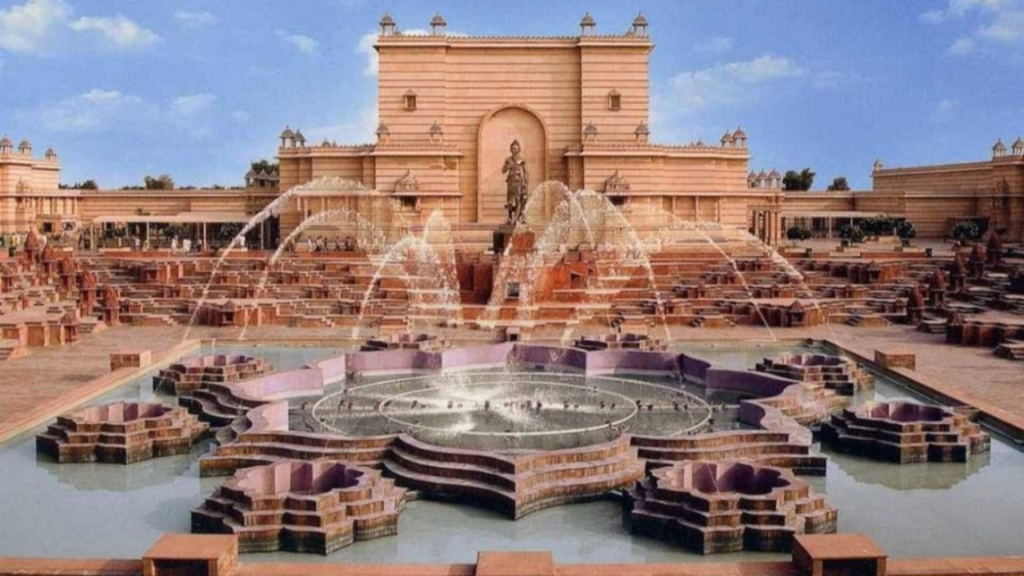
Etymologically, ‘Akshardham’ implies ‘The Divine Abode of God’.
Swaminarayan Akshardham stands as a major Hindu cultural center. This cultural campus is the main headquarters of its regional off-shoots located throughout the nation and the world.
This temple reflects the intricacies of Hindu mythological doctrines that have been followed majorly throughout the nation over the ages. The blending of ancient traditions with the virtues of modern India makes it one of the very popular tourist places in Delhi (rigidly among the Hindus).
Once visitors enter its premises, they bond together as a unified entity of strangers from around the world immersing themselves in its powerful vibe. The experience would simply give you goosebumps.
Led by the inspiration of Yogiji Maharaj, this temple was constructed by BAPS, who monitor their maintenance till date. Akshardham hails as the world’s second-largest BAPS Hindu temple.
As a cultural landmark for Vaishnavites (Vishnu-worshippers), this zone is purely vegetarian and animal cruelty-free. The main deities worshipped herein are; Shiva-Parvati, Lakshmi-Narayana, Radha-Krishna, Sita-Rama, and Swaminarayan. This landmark also hosts various ethno-cultural events during festivals and on other special celestially important days.
Special devotees can avail their parking, wheelchair, and other emergency facilities as well.
Venue Details
Address: NH 24, Pramukh Swami Maharaj Marg, Pandav Nagar, Near Akshardham Metro Station, New Delhi, Delhi, 110092, IndiaNew Delhi, Delhi – 110092
- Entry timings: Opens at 9.30 AM (Everyday)
- Website: https://akshardham.com/
Visiting Akshardham Temple is an experience of grandeur and spirituality. From the moment you step foot into its bustling premises, you’re greeted by a sense of awe and reverence…..
4.6⭐⭐⭐⭐
Lalit
13. Humayun’s Tomb
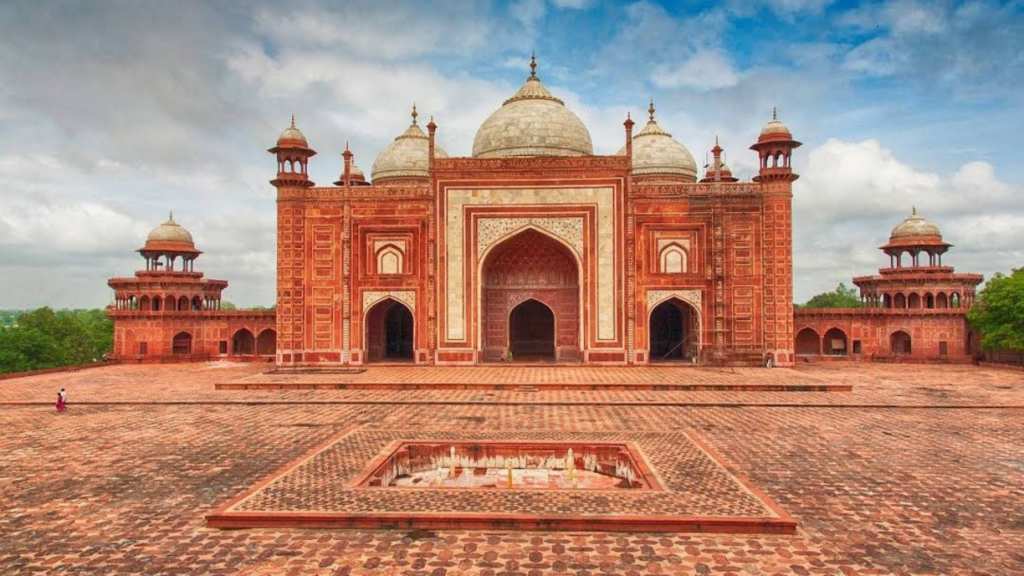
It is a 16th Century-built Mughal monument which is also a reputed UNESCO World Heritage Site. It holds a special place in history as it was constructed as India’s first garden tomb. This structure was built under the leadership of Mughal Emperor Akbar.
Humayun’s TombTomb serves as a final resting place for Emperor Humayun. It also contains the TombTomb of his great-great-grandson, Empress Bega Begum, Dara Shikoh, Hajji Begum, and some other Mughal rulers.
Visually, this grand tomb reflects the finesse of Indo-Persian craftsmanship. This was a first-of-a-kind garden tomb showcasing the idealistic ‘Charbagh‘ structure.
Humayun’s Tomb is a must visit in Delhi recommended for every tourist.
Venue Details
Address: Hazrat Nizamuddin Aulia Dargah, Mathura Rd., Nizamuddin East, Near Lodhi Garden, New Delhi, Delhi – 110013
- Entry timings: 6.00 AM – 6.00 PM (Everyday)
- Website: https://www.delhitourism.gov.in/delhitourism/tourist_place/humayun_tomb.jsp
This is a full afternoon trip since it takes a while to talk the whole complex. We tight tickets were a little pricey but the place is stunning and is a moist visit….
4.5⭐⭐⭐⭐
Luzdivina Sánchez
14. National Gallery of Modern Art
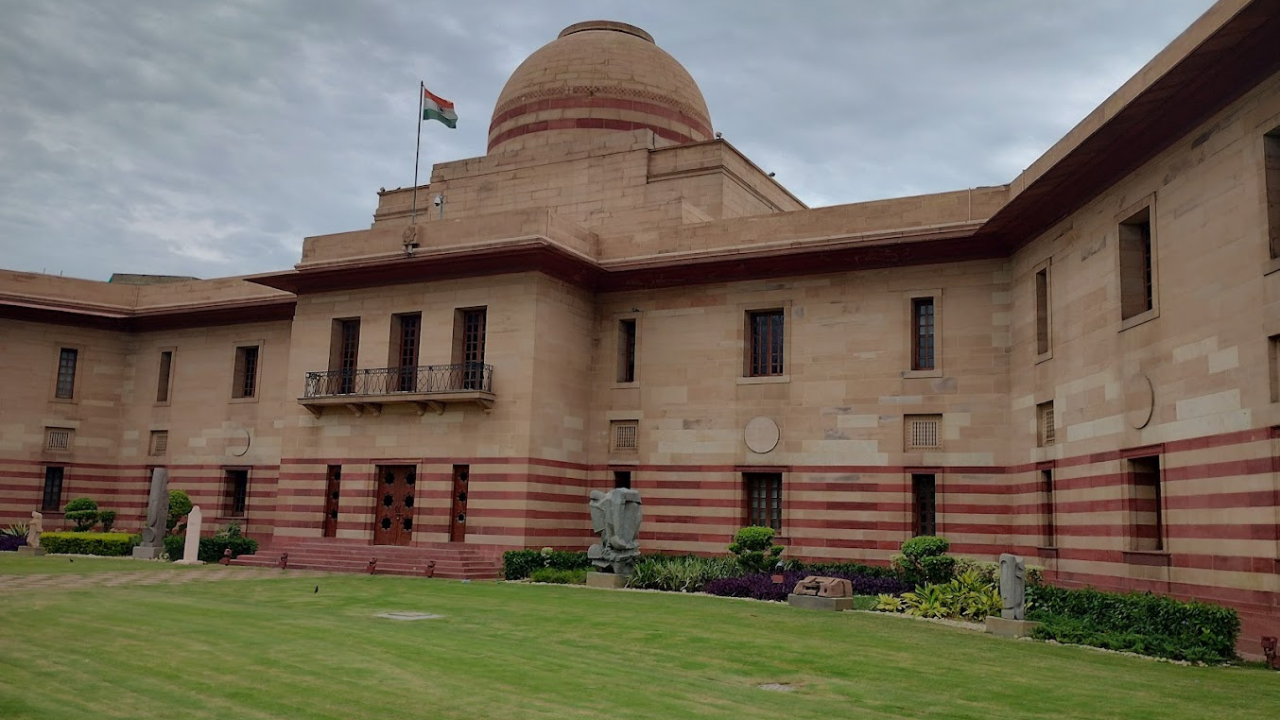
NGMA is renowned for preserving both colonial and modern Indian Art formats (ranging from those of the 18th to 21st Century). The complex roots of Indian art to date can be credited to its historically diverse socio-ethnic-religious assimilation.
The stimulus of our assimilated social culture prompts artists (even today) to express their concern and/ or agitation through art. One must visit this museum to cherish each showcased artist’s dynamically imaginative spectrum and how they’ve managed to thoroughly express the same on mere canvases.
This museum also displays timeless handcrafted statues and sculptures.
Venue Details
Address: Jaipur House, Shershah Rd, Near India Gate, New Delhi, Delhi – 110003
- Entry timings: 10.00 AM – 6.00 PM (Everyday)
- Website: https://sites.google.com/view/ngmaindia/ngma
The entry ticket is INR 20 for Indian nationals. As you enter the premises and walk to the gallery building, you will walk amidst sculptures sprinkled in the lawns and open spaces. The exhibits at the gallery are well organised on different levels……
4.5⭐⭐⭐⭐
Deep Shikha
15. Agrasen Ki Baoli
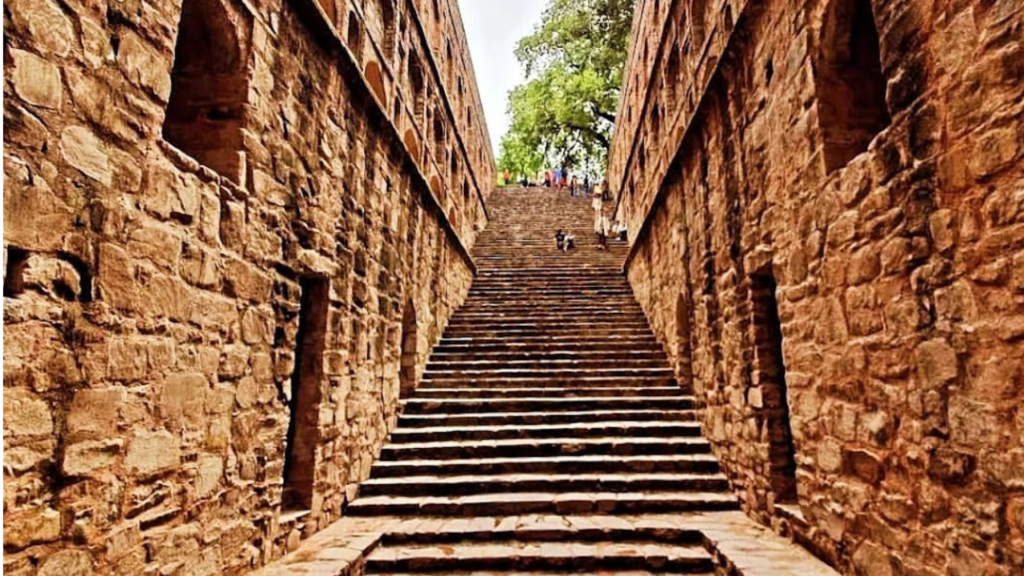
This landmark comprises a 15 m wide and 60 m long historical ‘baoli’ (stepwell). Furthermore, it possesses an iconic fleet of 108 steps.
Myths preach that this architectural marvel was constructed by Maharaja Agrasen, which was later renovated during the Delhi Sultanate regime by either the Lodi or Tughlaq dynasties. This is why the well’s structure imparts an Indus Valley-style structure along with its Indo-Persian aesthetics.
The ‘Ancient Monuments and Archaeological Sites and Remains Act’ of 1958 has reserved this landmark’s maintenance responsibility for the ASI. This iconic stepwell has been featured in multiple Bollywood movies like Sultan and PK.
This landmark enjoys a prime location in the vicinity of Connaught Place and Jantar Mantar.
Venue Details
Address: J6GG+C2F, Hailey Road, KG Marg, Near Max Mueller Bhavan, New Delhi, Delhi – 110001
- Entry timings: 9.00 AM – 5.30 PM (Everyday)
- Website: https://www.delhitourism.gov.in/dttdc/explore_the_city/agrasen_ki_baoli.jsp
Recommended for a short visit since there is not much to see. The history behind this stepwell is bit tempting too. In ancient times, people used to store water…..
4.2⭐⭐⭐⭐
Aayushi Satiya
Conclusion
Delhi’s rich historical legacy and diverse culture call for tourists (both across states and national boundaries) to explore India’s rich history at large. This city’s tourist attractions have something for everybody across faith, religious, and linguistic barriers. Being well-connected with railways, highways, and airways; Delhi acts as a prime travel node to other parts of the country.
To explore Delhi efficiently, its newbie tourists can easily avail the well-connected Delhi metro system as most of the mentioned tourist places in Delhi have their metro stations. One needs to download the Metro app to get the details and track their nearest metro station(s).
Traveling through a bustling Delhi is most suitable during the spring and autumn months for dealing with its weather extremes. Additionally, we suggest tourists also visit the ‘National Zoological Park’.
Do visit Delhi at least once in your lifetime!


